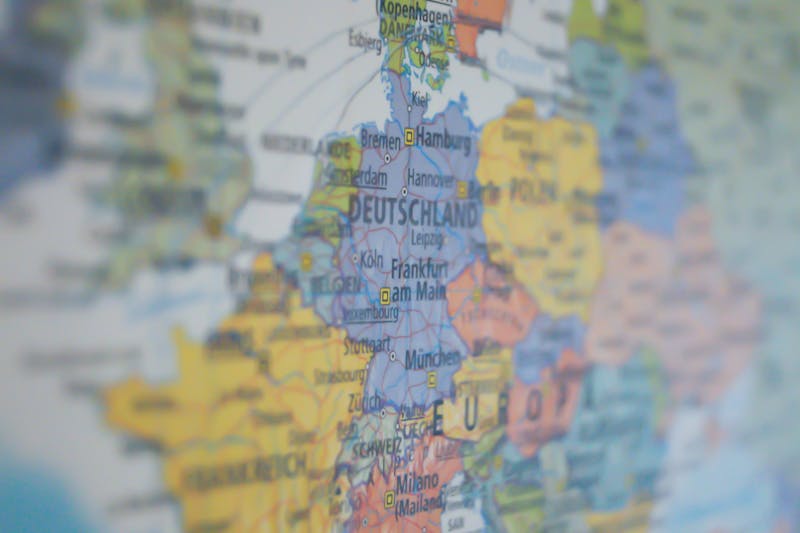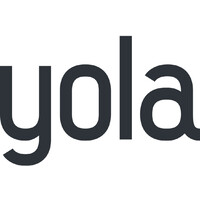Employee recognition, or lack thereof, can have a remarkable impact on profitability and employee engagement in your organization.
Employees are 18 times more likely to do well when they feel recognized for hard work. This underscores the potential opportunity cost of not building a culture of recognition.
This article explores the benefits and best practices of implementing effective employee recognition programs supported by real-world examples. It also looks at what happens when organizations fail to implement such programs effectively.
Benefits of Employee Recognition
When implemented successfully, employee recognition can benefit organizations in many ways including improved retention, culture, and customer service.
A Positive Work Environment
Effective recognition, whether delivered ad hoc or with the help of employee recognition software, fosters a positive work environment where employee appreciation and encouragement become part of the company culture. Such an environment sets the standards for respectful and appreciative interactions among team members.
A positive work environment also means open communication at every level of the organizational hierarchy. It allows employees to confidently share their ideas and feedback without fear of repercussions. This openness contributes to a more positive and collaborative work environment.
Less Employee Turnover and Improved Retention
Companies that build a culture of recognition are more likely to enjoy higher employee retention rates. A recent report by CIPD shows a positive relationship between employee recognition and employee retention. To confirm this, we can look at the other side of the coin: Research conducted by Quantum Workplace found that a lack of appreciation and recognition was among the top three drivers of employee turnover.

When employees are recognized for their efforts, it reinforces the idea that their hard work is valuable to the company. This serves as a motivator for staying longer with the same employer.
Improved Productivity and Engagement
Employee engagement statistics show that leaders who recognize their team members most effectively have the most engaged employees. Effective employee recognition creates a sense of belonging and fosters engagement in the workplace.
Recognition programs can also enhance productivity as employees are more motivated to do their best when they know their efforts will be recognized.
Satisfied Customers
When your employees feel recognized for the good work they do, they’re more likely to develop a positive attitude that would reflect in how they interact with customers.
Furthermore, to enhance customer focus, organizations can design recognition programs to reward specific behaviors that align with a customer-centric culture. This forms a positive feedback loop that encourages more employees to prioritize customer satisfaction.
Motivation to Go Above and Beyond
Acknowledgment can motivate employees to go the extra mile. As long as sought-after employee award titles and incentives are aligned with organizational goals, employee recognition programs coach the behaviors that most benefit the company’s success. Furthermore, employees experience higher job satisfaction when they receive recognition for their work, which motivates them to put greater effort into future projects.
Recognition taps into employees’ intrinsic motivation by appreciating them for their skills and hard work. Additionally, employees who see motivation given to their peers regularly will learn and emulate the behaviors that trigger recognition. This further motivates them to go above and beyond for their organization.
Incentive to Innovate
Organizations need to establish a culture of innovation to stay ahead of the competition. Recognition can act as a powerful motivator for innovation. A survey by Great Place to Work revealed that employees who feel recognized are 2.2 times more likely to drive innovation and come up with new ideas.
Programs that reward and recognize individuals for improving existing processes or products, or coming up with entirely new ones, reap the benefits of consistently staying ahead of the curve.
Improved Teamwork
Teams perform at their best when they learn how to collaborate to achieve shared objectives. Effective employee recognition programs reinforce this behavior by rewarding teamwork.
Reduced Stress
The latest workplace stress statistics show that around 57% of American and Canadian workers report feeling stressed at work every day. A component of workplace stress is a lack of directive — a concern that the work they do is not good enough or valuable. Effective recognition can lower this stress by acknowledging employee contributions to company success.
Recognition is a way for an organization to provide encouragement and reassure successful employees that they’re moving in the right direction. This provides a clear sense of direction to team members, eliminates uncertainty about desired behaviors, and as a result, lowers stress.
Attractive Employer Brand
If you want your new hires to be the top talent in your industry, you need to offer more than a big paycheck. The best professionals know their worth and look for a workplace culture that addresses their intrinsic as well as extrinsic motivations.
Accordingly, building a culture of recognition makes your employer branding more attractive to potential candidates and future leaders.

Real-World Examples of Effective Employee Recognition
We reviewed plenty of recognition programs to illustrate what recognition could look like in the real world. Here are examples from some of our favorite companies.
Peer Bonuses at Google
Peer-to-peer recognition at Google, referred to internally as “gThanks”, is a key component of employee recognition at Google. Employees can nominate their colleagues for peer bonuses of $175 for demonstrating behaviors in line with company values.
The program is smartly designed and has certain safeguards in place to prevent misuse. For example:
- Employees can’t nominate their own managers and vice versa.
- Once you nominate someone, you can’t do so again for a certain amount of time.
- No reciprocation. Anyone you nominate cannot nominate you for a few months.
- Employees can only receive one peer bonus for a certain activity.
- The same employee cannot win multiple peer bonuses at the same time.
When submitting a nomination, employees have to share the rationale for why they believe the nominee deserves recognition. The story becomes part of the certificate they receive with the bonus.
Recognition Alerts at Crowe
Crowe, a professional services firm, uses multiple data points to identify employee recognition opportunities. First, it uses client satisfaction surveys to learn about the top-performing employees on a given project. The surveys generate a “Recognize Alert” for HR to review.
Second, the company asks the employees recognized in the survey to identify other colleagues who played a significant supporting role but weren’t identified in the survey.
Both sets of employees receive public recognition through Crowe’s internal communication channels as an example for all the employees to follow. This practice boosts employee morale and helps deserving employees feel appreciated.
Social Recognition and Awards at P&G
P&G recognizes employees using various bonuses and awards. A prominent social recognition program at the company is called “Power of You”. It recognizes employees who go the extra mile in their defined roles and make a positive impact on the bottom line.
The company also recognizes exceptional performers with a CEO Award that comes with social recognition and a monetary reward.
What Happens Without Effective Employee Recognition?
The absence of effective employee recognition may affect companies in different ways based on factors such as industry and business size. However, you might observe common themes such as suboptimal retention, engagement, and job satisfaction.
Specifically, the common symptoms of deficient employee recognition are:
- Lower Employee Morale and Performance: When your team feels their efforts go unrecognized, they feel less motivated to work hard and hit their targets.
- Higher Voluntary Employee Turnover: Talented employees who feel their work isn’t acknowledged start looking at other opportunities where they’re more likely to be recognized.
- Poor Team Culture: In the absence of an effective employee recognition system, team members often lose their direction and sense of purpose due to a lack of behavior reinforcement. No recognition means no incentive for alignment with company goals, no reason to prioritize teamwork, and no motivation to foster a positive team culture.
- Higher Stress: Employee recognition programs allow companies to show appreciation to hardworking individuals and reassure them about the quality of their work. When there’s no recognition, insecurity can creep in, raising employee stress levels.
- Lower Customer Satisfaction: Dissatisfied employees create dissatisfied customers. Lack of recognition creates a culture of negativity. Employees feel disheartened and less valued. This negativity inevitably reflects in their interactions, creating poor customer experiences and damaging brand loyalty.
2 Companies That Got Employee Recognition Wrong
Mistakes are great teachers but in business, they can cost you dearly. Therefore, we recommend learning from the mistakes of other companies that got employee recognition wrong.
Microsoft’s Stack Ranking System
Microsoft got employee recognition wrong when they adopted the “Stack Ranking System.” This recognition program required management teams to categorize employees as top, good, average, below average, and poor performers.
Even if everyone on your team did a great job, the system required ranking 20% of the people at the top, 70% in the middle, and 10% at the bottom. The ones at the top received bonuses and awards, while the ones at the bottom received no recognition or were let go.
This created a cannibalistic culture at the company where employees started focusing on competing with each other instead of other companies. Top employees would avoid working with other top performers for fear of getting a bad review. Consequently, this affected teamwork and productivity.
Eventually, the company decided to listen to employee feedback about the culture of toxicity created by this recognition system. The program was discontinued in 2013.
United Airlines’ Outperform Recognition Program
United Airlines implemented the Outperform Recognition Program in 2012 to allow customers to recognize employees for great work. Unfortunately, the design and implementation of the program left a lot to be desired.
To nominate an employee, customers had to download an app, find out the employee ID of the individual they’re trying to recognize, and offer a rationale for the recognition in just 120 characters. For perspective, the original character count of a Tweet used to be 140 characters before it was doubled.
Furthermore, in addition to these impediments on the customer side, the program was not well communicated to the employees. It did not identify any desired behaviors or company values that the employees specifically needed to demonstrate to be eligible for recognition.
Moreover, regardless of the number of employees recognized by customers, only 16 were randomly selected by the management for recognition, leaving everyone else out. This caused resentment, confusion, and frustration among team members.
The program received negative feedback from customers, employees, and industry experts alike. Consequently, nobody was surprised when it was discontinued shortly after launch.
Final Thoughts on the Importance of Employee Recognition
The importance of employee recognition is hard to deny. From fostering positivity to fueling employee motivation, its impact is palpable.
Real-world examples highlight success stories, but cautionary tales like Microsoft's Stack Ranking flop underscore the need for careful program design. At the end of the day, most successful companies and top talent would agree that effective recognition is the heartbeat of a healthy workplace culture.


























